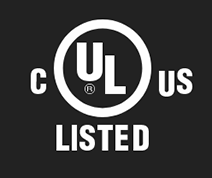Self Contained Nitrogen Generators
What Are Self Contained Nitrogen Generators?
A self contained nitrogen generator allows you to produce your own nitrogen right at your facility, bypassing nitrogen cylinder delivery. You can either set it up to produce a continuous supply, or you can generate nitrogen on demand.
No matter your industry, a nitrogen generator can make life a lot easier—and the nitrogen generator will pay for itself with the amount of money you save on cylinders. Here is a closer look at the two main types of nitrogen generators available:
PSA Nitrogen Generators
A PSA nitrogen generator is a nitrogen generator that uses pressure swing adsorption to generate oxygen. Adsorption is the process of separating molecules, so a PSA nitrogen generator literally separates the nitrogen from the oxygen in the air. The oxygen molecules are smaller, so the sieve material absorbs them, and the nitrogen molecules are larger, so they continue on into the nitrogen receiver. A PSA nitrogen generator is an excellent, economical way to have nitrogen on demand. It provides reliable year-to-year gas costs and gives you a rapid return on your investment.
Membrane Nitrogen Generators
A membrane nitrogen generator is a fully functional, ready-to-go system. We build it according to your exact specifications and then ship it to you ready to put online. A membrane nitrogen generator can be customized to be compatible with any compression equipment, making it ideal for a wide array of applications.
A membrane nitrogen generator works by feeding pressurized air into hollow fibers. These fibers contain small holes that force the oxygen molecules to exit the system when under pressure. Any CO2 and water vapor in the air will also permeate through the walls of the fibers. However, nitrogen molecules are larger and they are extremely dry, so they do not easily saturate into the fibers. This means they are the only particles that survive the membranes). These nitrogen particles are then collected for you to use. If you require a lower purity of nitrogen, you simply need to decrease the speed at which the air is dispersed. Since there are no moving parts in membrane nitrogen generators, they are very low maintenance, and they are able to produce a constant nitrogen supply.
To learn more about our self contained nitrogen generators, or to find out which one will work the best for your application, contact us today.



